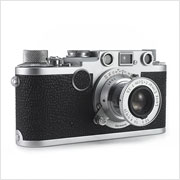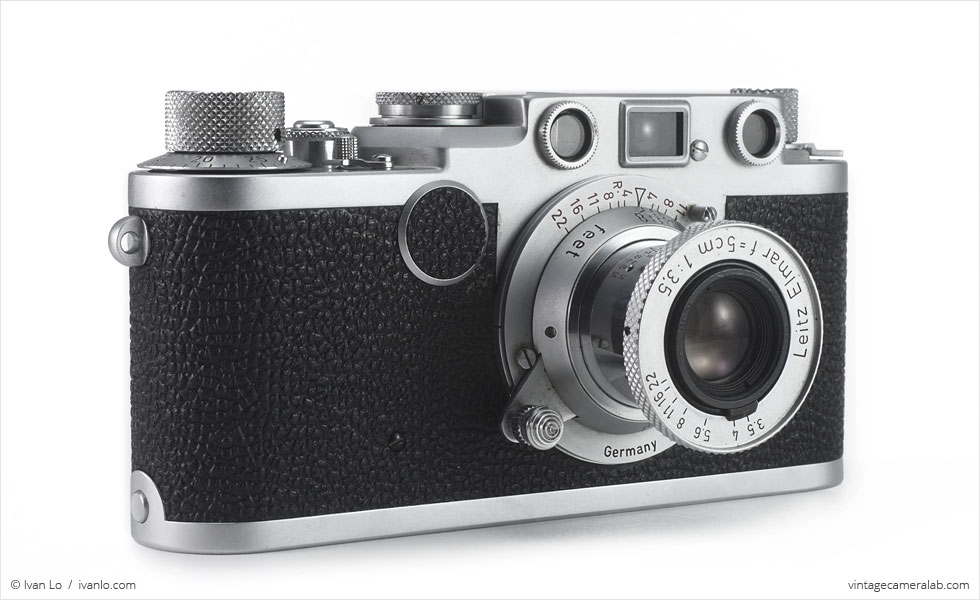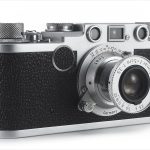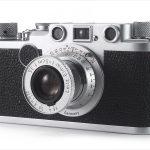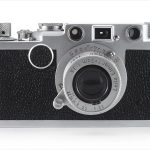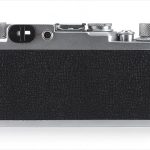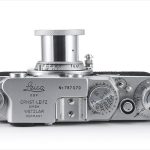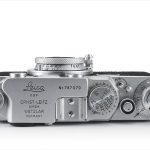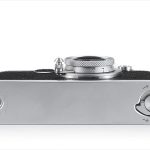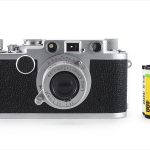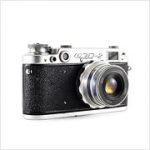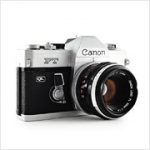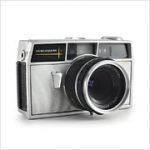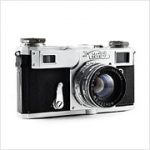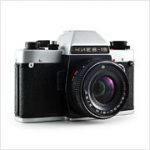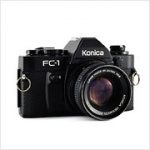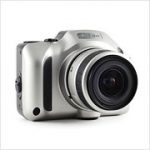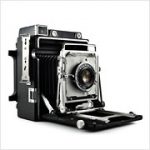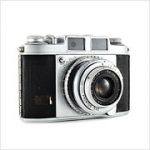Leica IIf Specifications
| Manufacturer: | Ernst Leitz GmbH |
| Origin: | West Germany |
| (modern day Germany) | |
| Made in: | Wetzlar, West Germany |
| (modern day Germany) | |
| Introduced: | 1951 |
| Type: | Rangefinder |
| Lens Mount: | M39 Screw Mount |
| (Leica Thread Mount) | |
| Format: | 135 Film |
| Dimensions: | 13.6 x 6.9 x 4.2 cm (lens collapsed) |
| 13.6 x 6.9 x 6.2 cm (lens extended) |
Leica IIf Overview
The Leica IIf is a high-end 35mm rangefinder debuted in 1951 by Ernst Leitz GmbH and produced in the German city of Wetzlar. This model is essentially identical to the Leica IIIf but without the capability of shutter speeds slower than 1/25 of a second. However, even the IIf model itself has several variants. This particular example has red flash sync numbers around the base of the shutter speed dial as opposed to black and a fastest shutter speed of 1/1000 as opposed to 1/500.
With the exception of the standard Leitz Elmar 50mm f/3.5 lens and because the Leica IIf has a placeholder where the slow shutter speed dial would normally be on the IIIf, all of the controls are on the top plate. To the left of the viewfinder and rangefinder assembly is the knurled film rewind knob with diopter adjustment dial. Moving towards the right is a cold shoe, a shutter speed dial with flash sync controller underneath, shutter button, film rewind release, and finally the film advance knob with integrated film speed indicator and rotating frame counter at its base. The viewfinder and rangefinder windows and adjacent flash sync socket are the only things of note on the back of the camera. Instead of a hinged film door, this camera employs a completely removable bottom plate which can be released by a rotating latch opposite the standard 1/4 inch tripod socket.
This is my first (and, to date, only) Leica in my collection and it was an extremely generous gift from a good friend’s parents. My friend’s uncle was the original owner and reportedly only used this camera a handful of times before putting it in storage. When it was given to me nearly 50 years later, it came with a handful of accessories like a Leica fan flash reflector, the original receipt dated July 6th, 1956 from the legendary (and now defunct) Chicago distributor Altman Camera Company, U.S. Customs documents for both body and lens, warranty certificates issued by Leica’s New York City office for both body and lens, various advertising brochures for Leica accessories, and the original velvet-lined display box complete with the original tissue paper still inside!
Find your very own Leica IIf on eBay.
McKeown, James M. and Joan C. McKeown’s Price Guide to Antique and Classic Cameras, 2001-2002. (Grantsburg, WI, USA: Centennial Photo Service, 2001), p 419, 427, 431.
